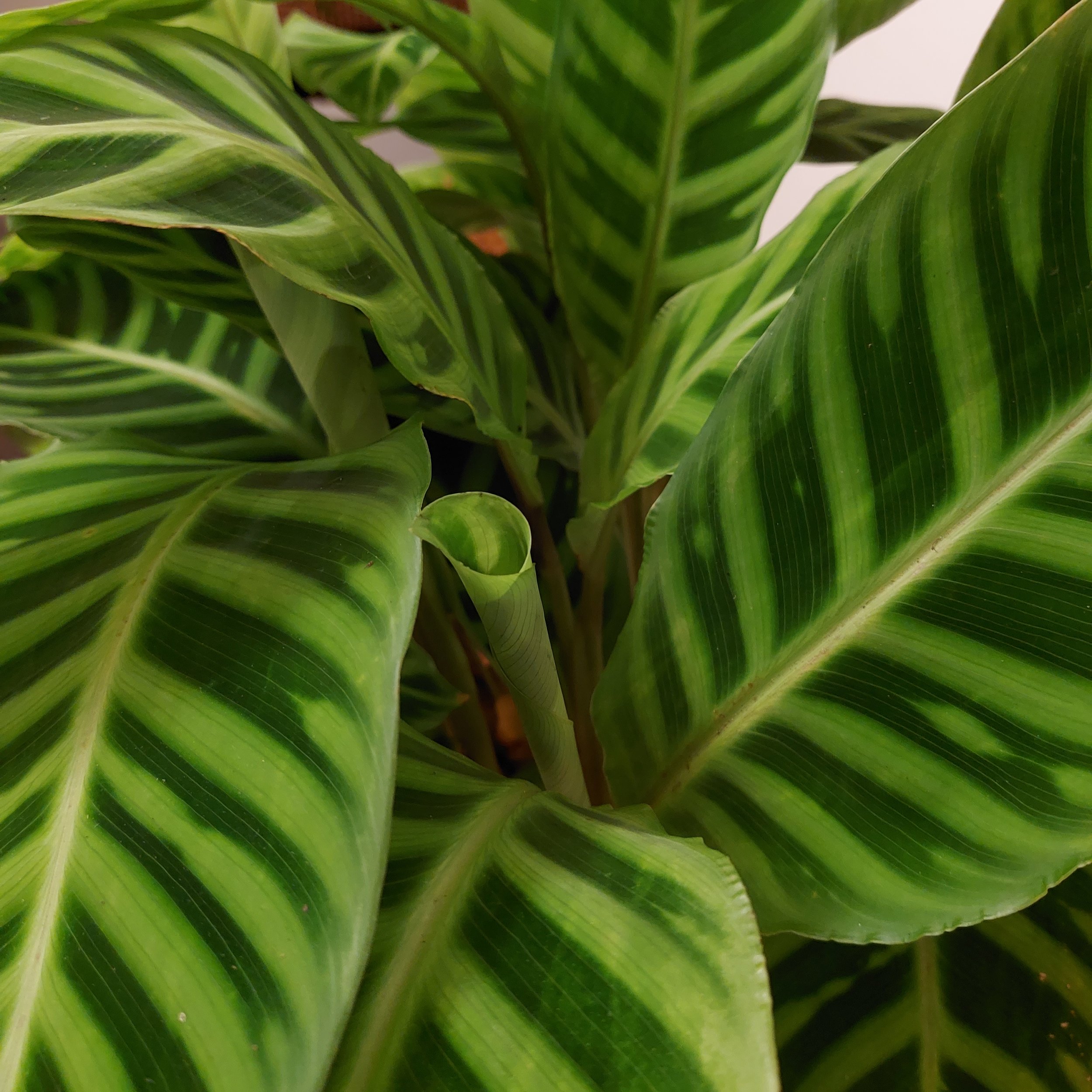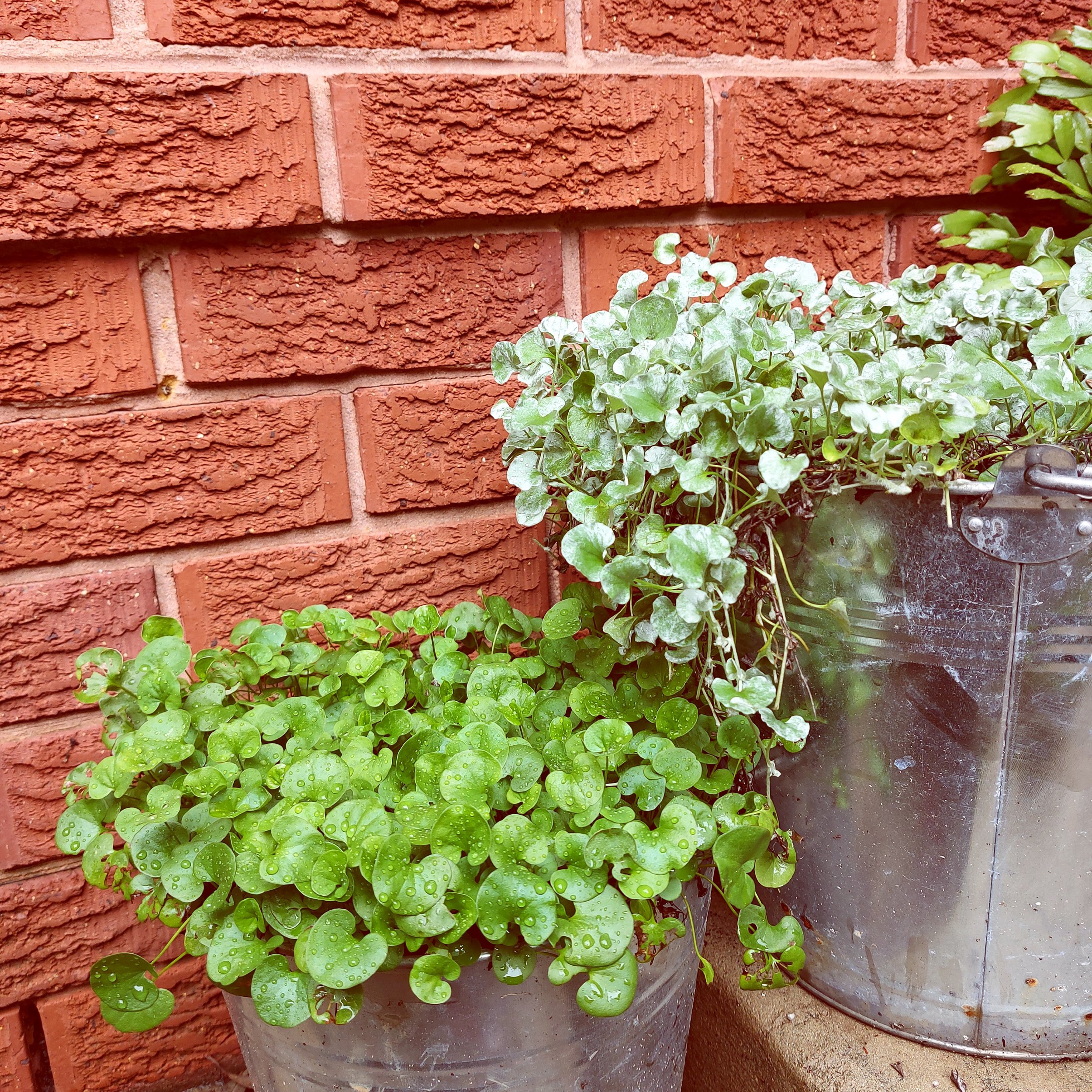
Potted Plants
Potted plants are a great way to add colour and life to a patio, balcony, bathroom, kitchen or deck. They provide a way of keeping a rich and varied green space in places that would not be traditionally associated with gardens, think rooftops, green walls, window sills and kitchens. We have selected a few species of plants that are hardy and low maintenance to inspire you to start potting and create innovative green spaces.

Ivy - Hedera canariensis
Ivy makes a great cascading potted plant because it is low maintenance, vigorous and can thrive in a range of conditions. Ivy can be trained to grow on a fence, wall or trellis or can be allowed to flow downwards from its pot. This particular common type is Canary Island Ivy, and has a larger leaf than Hedera helix - English Ivy, however the same care instructions apply for both types.
Potting: Plant ivy in good quality potting mix, water whenever soil feels dry to the touch and fertilise with slow release fertiliser every 3 months. Ivy should be placed in an area of filtered or in-direct light so it makes a great house plant. Ivy grows fairly quickly during spring and summer and will reward pruning with lots of pale green growth.
Rubber tree - Ficus elastica Ruby
Rubber trees are great in pots because they give the appearance of a much larger plant with their upright nature and broad leaves. Indeed if you plant rubber trees in a large enough pot they will grow to well over 2 meters tall. This Variegated variety is interesting because of its pink highlights and mottled leaves.
Potting: Always plant rubber trees in good quality potting mix as they require free draining soils to thrive. Water whenever the soil feels dry to the touch, making sure the pot is able to drain well so that the roots of the plant are not in standing water. Place your Rubber tree in a spot that gets plenty of morning sun and indirect light during the day, direct sun all day and afternoon sun could scorch the leaves of the rubber tree which after all are its main attraction. Fertilise with slow release fertiliser every 3 months. Avoid pruning if possible as Rubber trees are slow growing and tend to grow from a few main stems.
Cast Iron Plant - Aspidistra elatior
The Cast Iron Plant, so named for its apparent abillity to survive just about any conditions, is an excellent potted plant for gardeners who are forgetful with maintenance or who simply don’t have the time. It’s large green leaves and slow growing nature make it a great house plant as its appearance is reliable and easily maintained.
Potting: Plant Aspidistra in good quality potting mix. During the growing season, Spring and Summer, water whenever the soil feels dry (once or twice a week) however during the Autumn and Winter Aspidistra will require alot less watering, allow the soil to remain dry for a week between watering. Place your plant in a spot out of direct sunlight, Aspidistra will thrive in filtered and indirect light and will easily become scorched in full sun. The light requirements for Aspidistra make it perfect for use in bathrooms, hallways or under pergolas. Fertilise with slow release fertiliser once every 3 months during Spring and Summer and not for the rest of the year.



